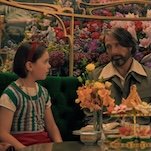Despite his renown on the battlefield, Thomas-Alexandre fought unsuccessfully to get an army pension, and when he died of stomach cancer, his widow didn’t have the money to send their young son Alexandre to school. Nevertheless, he read everything he could get his hands on and taught himself Spanish. When he came of age, his father’s rank was enough to open doors for him, and 20-year-old Alexandre took a job for Louis Philippe, Duke Of Orléans.
Thing we were happiest to learn: It didn’t take long for Dumas to leave the civil service for a career as a writer. While working for Orléans, he began writing magazine articles on the side. At 27, he had his first play produced, Henry III And His Courts. It was a critical and commercial success, as was Christine, produced the following year, and between the two, he had enough income to write full-time. About that same time, the Second French Revolution ousted Charles X and put Louis Philippe on the throne. With a friendly face in power and press censorship lifted by the new government, Dumas’ career took off. One of his plays, a retelling of The Nutcracker, formed the story for Tchaikovsky’s ballet. After more success as a playwright, he rewrote one of them, Le Capitaine Paul, as a serial novel, and embarked on a second career that would make him the most popular writer in France’s history, and one of the most prolific, publishing 100,000 pages in his lifetime. Dumas spent money lavishly, sometimes faster than he earned it. But his success meant he simply earned more money.
Thing we were unhappiest to learn: Dumas didn’t always credit his collaborators, one of whom, Auguste Maquet, sued Dumas over authorship of Georges, an early short novel whose themes were revisited in The Count Of Monte Cristo. Maquet got more money out of Dumas, but no credit. A more agreeable collaboration was with Augustin Grisier, Dumas’ fencing teacher. Dumas turned Grisier’s first-hand account of Russia’s Decembrist revolt into the novel The Fencing Master. Czar Nicholas I banned both the novel and Dumas from entering Russia.
Also noteworthy: After an 18-year reign, Louis Philippe was overthrown, and Napoléon III was elected president. As a Philippe loyalist, Dumas fled the country, first moving to Belgium, then Russia (Nicholas was dead by that point and the ban had been lifted), then Italy. Dumas made the most of his exile, publishing travel books about his adopted homes, and finding new audiences for his novels. He even founded an Italian newspaper, Indipendente.
Dumas died in 1870, and his books fell out of fashion. But the second half of the 20th century brought a renewed interest in his work, and Dumas scholarship thrived, unearthing unpublished manuscripts as recently as 2002. At the bicentennial of his birth, then-president Jacques Chirac presided over Dumas’ ashes being interred in the Panthéon, alongside Voltaire, Rousseau, Hugo, Zola, and other giants of French culture.
Best link to elsewhere on Wikipedia: This link is light on text, but has some terrific photos. In 1846, Dumas used the money he earned from his wildly successful The Count Of Monte Cristo to build a palatial estate he named Château De Monte-Cristo, which included a writing studio elsewhere on the grounds. However, Dumas only lived there for two years. Having blown through his money, as was his custom, he had to sell the place. It eventually fell into disrepair, but was restored in the 1960s with financial support from King Hassan II of Morocco, and it now stands as a museum to Dumas.
Further down the Wormhole: Among his long list of accomplishments, Dumas was also a true crime writer. With several co-writers, he published Celebrated Crimes, an eight-volume essay collection on famous criminals throughout Europe. Essays differ from other styles of nonfiction, as they often espouse a point of view, and the art of essay writing has become central to formal education. China has poured resources into education in the past few years, greatly increasing the number of college graduates in the last decade. But the country has significant problems with educational inequality, particularly between rural and urban students. And even a degree isn’t a guarantee of success, as evidenced by Chinese cities’ ant tribes. We’ll take a look at those (spoiler alert: no actual ants are involved) next week.








































